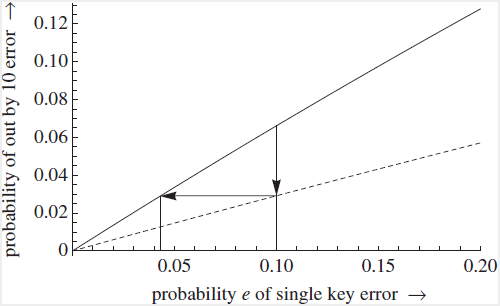Authors
Harold Thimbleby & Paul Cairns
Abstract
Number entry is ubiquitous: it is required in many fields including science, healthcare, education, government, mathematics and finance. People entering numbers are to be expected to make errors, but shockingly few systems make any effort to detect, block or otherwise manage errors. Worse, errors may be ignored but processed in arbitrary ways, with unintended results.
A standard class of error (defined in the paper) is an 'out by 10 error', which is easily made by miskeying a decimal point or a zero. In safety-critical domains, such as drug delivery, out by 10 errors generally have adverse consequences.
Here, we expose the extent of the problem of numeric errors in a very wide range of systems. An analysis of better error management is presented: under reasonable assumptions, we show that the probability of out by 10 errors can be halved by better user interface design. We provide a demonstration user interface to show that the approach is practical.
Sample

This is the simulated probability of an 'out by 10' error against the probability of a single key error.
The dashed line shows the reduction in 'out by 10' errors by blocking syntax errors. It is equivalent to halving the user's keying error rate.
Publication
2010, Journal of the Royal Society, Interface, Volume 7, Number 51, pages 1429–1439
Full article
Reducing number entry errors: Solving a widespread, serious problem
